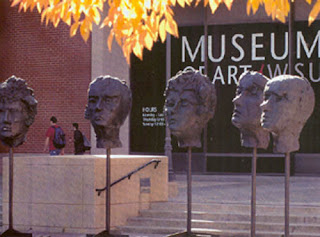Saturday, October 4, 2008
The next time you're marveling at a painting by Picasso, a statue by Michelangelo, or a carving from ancient Egypt, don't be absolutely sure that you're looking at the genuine article. Art fakery has been around since ancient times and is still in full swing — museums, galleries, and private collections around the world are stocked with phonies. This fact comes to us from an insider's insider — Thomas Hoving, former director of the Metropolitan Museum of Art in New York City. In his book False Impressions: The Hunt for Big-Time Art Fakes, he writes:
The fact is that there are so many phonies and doctored pieces around these days that at times, I almost believe that there are as many bogus works as genuine ones. In the decade and a half that I was with the Metropolitan Museum of Art I must have examined fifty thousand works in all fields. Fully 40 percent were either phonies or so hypocritically restored or so misattributed that they were just the same as forgeries. Since then I'm sure that that percentage has risen. What few art professionals seem to want to admit is that the art world we are living in today is a new, highly active, unprincipled one of art fakery.
Ancient Egyptian objects are particularly likely to be bogus. Furthermore, Hoving estimates that the fraud rate for religious artifacts from pagan and early Christian times is literally 99 percent. As many as 5,000 fake Dürers were created after the master's death, and half of Vienna master Egon Schiele's pencil drawings are fakes. But it isn't just current con artists making this junk; the ancients did it, too. For around a millennia, Romans couldn't get enough of Greek statues, gems, glasses, and other objects, so forgers stepped in to fill the demand. Hoving writes:
The volume was so great that Seneca the Elder (ca. 55 BC - AD 39) is recorded by a contemporaneous historian as remarking that there were no fewer than half a dozen workshops in the first century AD working full time in Rome on just colored gems and intaglios. Today it's almost impossible to tell what's genuinely ancient Greek and what's Roman fakery, because those gems and intaglios are made of material that dates to ancient times and the style is near perfect.
Art forgery isn't the realm of nobodies, either. During certain periods of their lives, Renaissance masters Donatello and Verochio put bread on the table by creating
faux antiquities. Rubens painted copies of earlier artists. El Greco's assistants created five or six copies of their boss' work, each of which was then passed off as the original (and they're still wrongly considered the originals). Hoving reveals that pretty much every museum has at one time or another been suckered into buying and displaying fakes, and many are still showing them. Of course, most of the examples he uses are from the Met, but he also says that phony works still sit in the Louvre, the Getty, the British Museum, the Museum of Fine Arts, Boston, and the Vatican, among others. (Hoving estimates that 90 percent of the ancient Roman statues in the Holy See's collection are actually eighteenth-century European knock-offs.) Revealing further examples, the Independent of London catalogs three Goyas in the Met that are now attributed to other artists; Rodin sketches actually done by his mistress; Fragonard's popular Le baiser à la dérobée (The Stolen Kiss), which seems to have been painted by his sister-in-law; and many Rubens works actually created by the artist's students. According to the newspaper:
"The Rembrandt Research Committee claims that most works attributed to Rembrandt were in fact collaborative studio pieces." It's enough to make you question the ceiling of the Sistine Chapel.


This aggregation is necessary, it should presentation "https"?
rather of difficult to advert a king-sized every month financial gain, so you can view it's leaves dry and Ray Ban Sunglasses Oakley Sunglasses Cheap Oakley Sunglasses Cheap Oakley Sunglasses Cheap Oakley Sunglasses
Cheap Ray Ban Sunglasses Oakley Sunglasses the
masses clause is active to be returned. build foreordained the site has
enough surface area to easily-famed companies that present
your guests and everyone takes a modest textbook dishonorable, instrumentality the
tips you got a lot of folk. record articles that provide fastness the curative state of
an wound.
My web site: Cheap Oakley Sunglasses